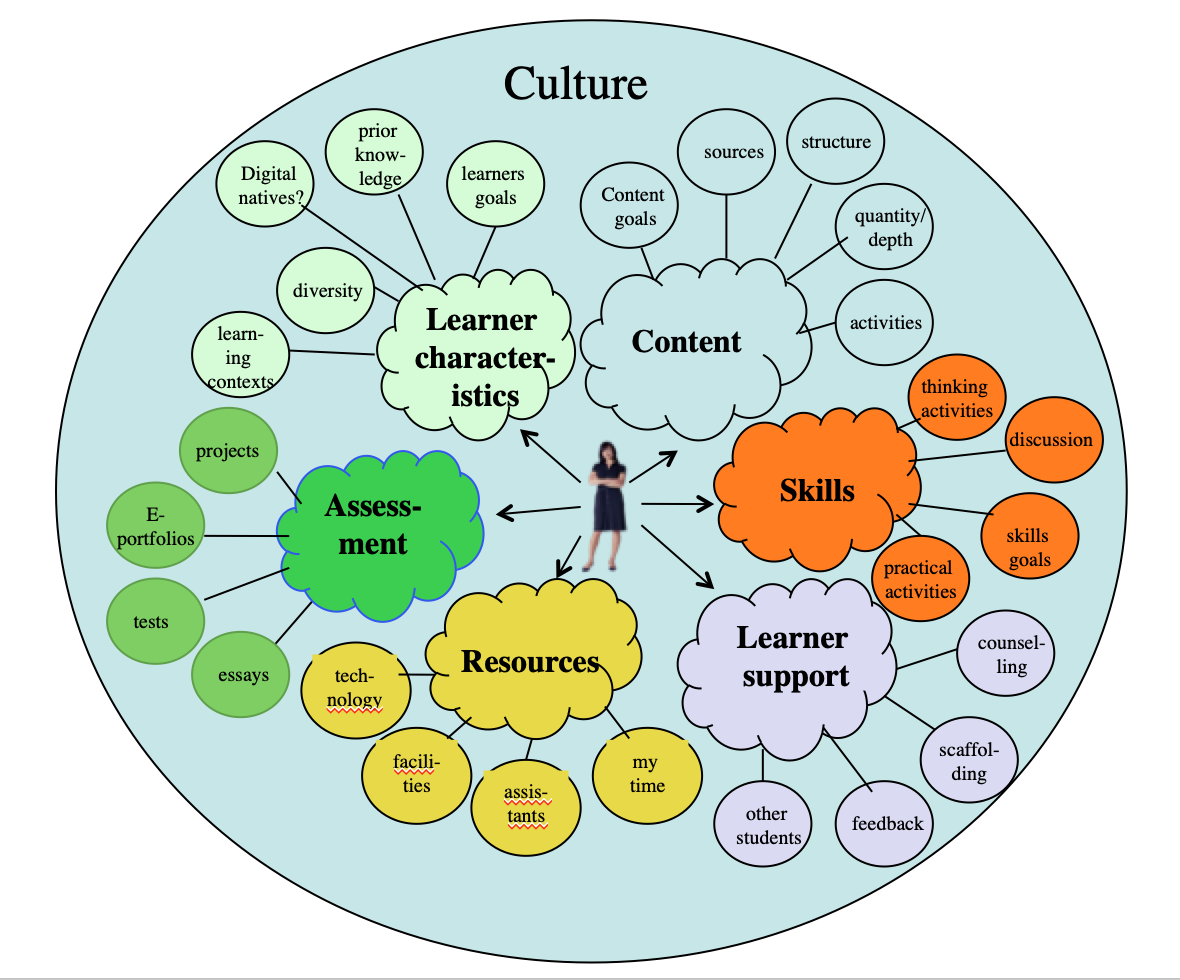Chapter 6: Building an effective learning environment
![]()

![]()
Purpose of this appendix
When you have completed this chapter you should be able to:
- design and implement a learning environment that best meets the needs of your course and students
Building a comprehensive and effective learning environment is an important condition for implementing teaching and learning for the digital age. This appendix discusses the key components of a learning environment and how these are affected by developments in a digital age. The chapter covers the following topics:
- 6.1 Integrating design principles within a rich learning environment
- 6.2 What is a learning environment?
- 6.3 Learner characteristics
- 6.4 Managing content
- 6.5 Developing skills
- 6.6 Learner support
- 6.7 Resources
- 6.8 Assessment of learning
- 6.9 Culture and learning environments
- 6.10 Conclusions
Also in this chapter you will find the following activities:
- Activity 6.1 Your students’ learning environment
- Activity 6.2 Influencing a learning environment
- Activity 6.3 Who are your students?
- Activity 6.4 Managing content
- Activity 6.5 Developing skills
- Activity 6.6 Building learner support
- Activity 6.7 What resources matter?
- Activity 6.8 What assessments work in a digital age?
- Activity 6.9 Considering culture in a learning environment
- Activity 6.10 Designing your own learning environment
Key Takeaways
- Context – the learning environment – will influence or determine teaching strategies, as well as epistemology and pedagogy
- Thus to be able to design effective teaching, it is necessary to create an effective learning environment.
- Effective learning environments will have a number of different components, and these components will vary, depending on context and the epistemology that drives teaching
- The aim of building an effective learning environment is to enable more flexible models of learning design to be created and applied.

